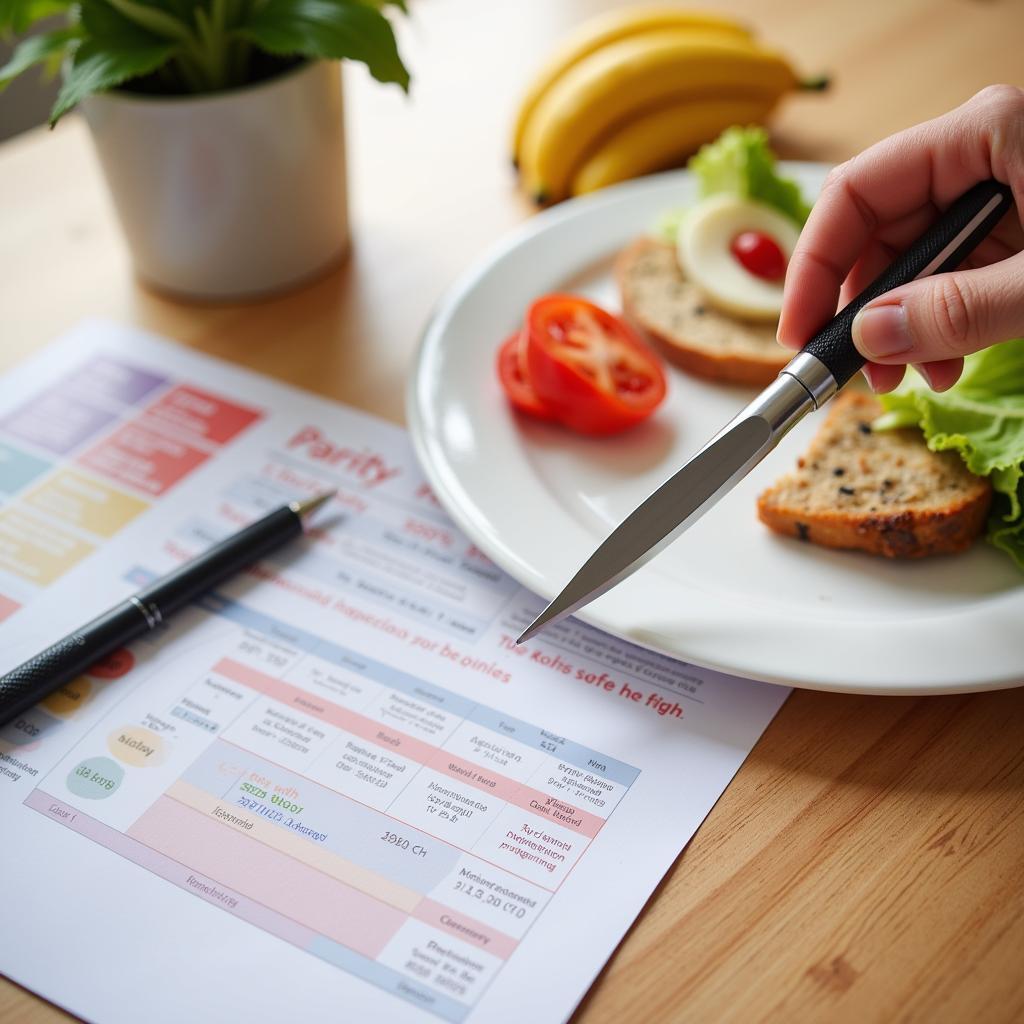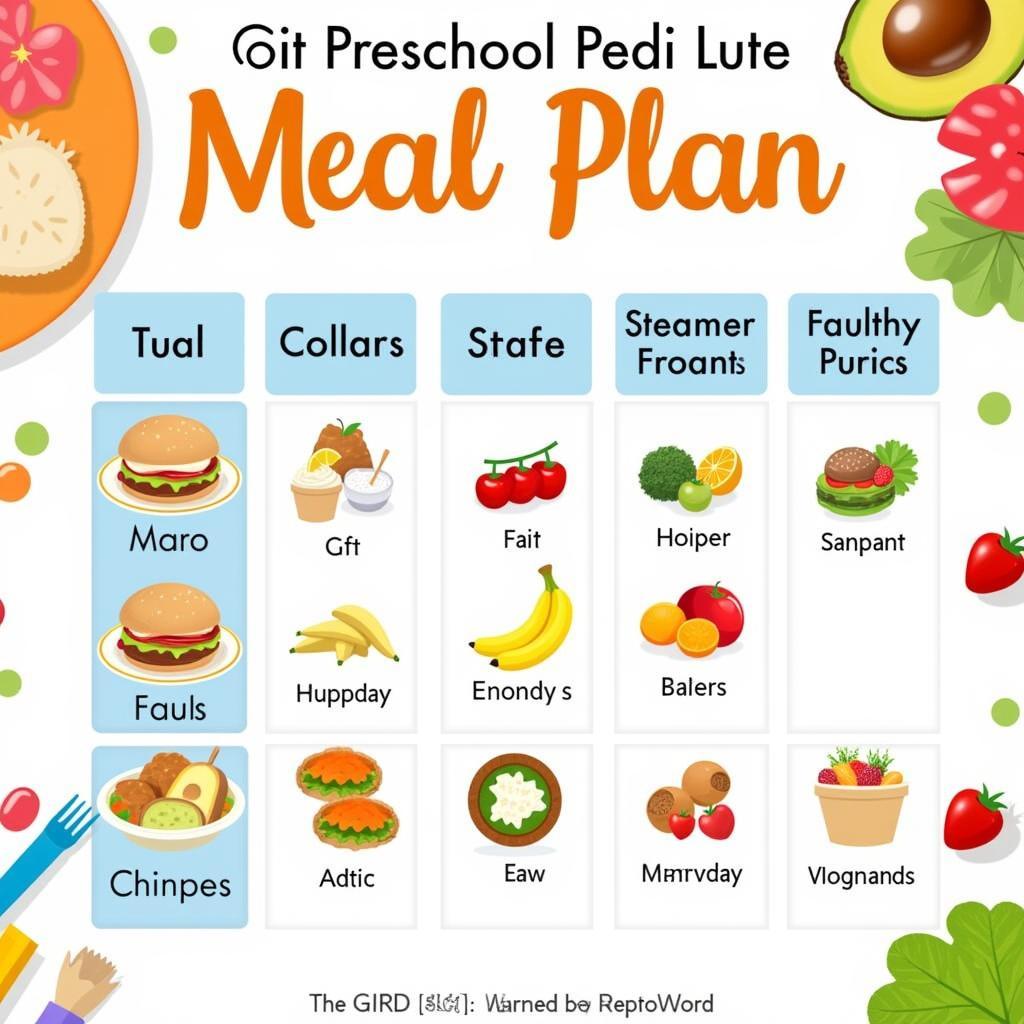“Happy child, relieved parents” – a simple saying that encapsulates the heartfelt sentiments of all parents. Raising young children, especially preschoolers, ensuring their meals are nutritious and balanced is always a challenging task. So, how can you calculate nutritional portions for preschool children scientifically and effectively? Refer to the preschool meal plan template for a more comprehensive overview.
The Importance of Preschool Nutrition
Nutrition plays a pivotal role in the overall development of children, especially during the preschool years – a golden period for growth in both physical and intellectual aspects. A scientific and balanced diet not only helps children grow taller and healthier but also strengthens their immune system, promotes brain development, and lays a solid foundation for the future. As the saying goes, “Eat well, dress warmly,” good nutrition truly is the foundation for a healthy body, helping children learn and play effectively.
 A parent calculating nutritional portions for their preschool child's meal
A parent calculating nutritional portions for their preschool child's meal
How to Calculate Nutritional Portions for Children
Calculating meal portions for preschool children needs to consider various factors such as age, gender, activity level, and health status. It’s not just about “eating until full” but “eating nutritiously.” According to Ms. Lan Anh, a preschool nutrition expert with over 20 years of experience at Hoa Sen Kindergarten in Hanoi, as mentioned in her book “Golden Nutrition For Your Beloved Baby,” dividing meals throughout the day is crucial. Children should have 3 main meals and 2-3 snacks to ensure a steady supply of energy and nutrients. Understanding the duties of a preschool cook is also very helpful for parents.
Nutritional Needs by Age Group
- From 1-3 years old: During this stage, children need about 1000-1300 calories per day, distributed across meals. Their diet should be diverse, including food groups such as carbohydrates, protein, fats, vitamins, and minerals.
- From 3-6 years old: Energy needs increase to about 1300-1800 calories per day. Additionally, it’s necessary to increase foods rich in calcium, iron, and B vitamins to support bone and nervous system development.
 A balanced meal plan for preschool children
A balanced meal plan for preschool children
Building a Balanced Menu
A balanced menu for preschool children should include all four main food groups: carbohydrates (rice, porridge, noodles, pho, etc.), protein (meat, fish, eggs, beans, etc.), fats (vegetable oil, fish oil, etc.), and vitamins and minerals (vegetables, fruits).
I remember once a young mother confided in me that her child was a picky eater, only liking rice with fish sauce. After investigating, I learned that she was giving her child too many sweets before main meals, making the child full and not wanting to eat. I advised her to limit sweets, feed her child on time, and create a pleasant atmosphere during meals. Gradually, the child ate better and gained weight steadily. It was so joyful to see the smiles of both mother and child! Many mothers must also wonder what is a preschool cook, right?
Other Important Notes
- Avoid forcing children to eat too much in one meal.
- Ensure children drink enough water, especially on hot days.
- Experiences in preschool semi-boarding nutritional hygiene are also an important factor to consider.
- According to folk beliefs, “eat what benefits what,” so many people believe that feeding children pig brain will make them smarter. However, this has not been scientifically proven. The most important thing is still a balanced and diverse diet.
 A preschooler enjoying a snack
A preschooler enjoying a snack
Conclusion
Hopefully, this article has provided you with useful information on how to calculate nutritional portions for preschool children. Remember that each child is unique, so adjusting meal portions to suit each child is extremely important. If you have any further questions, please contact Phone Number: 0372999999, or visit the address: 234 Hao Nam, Hanoi. We have a 24/7 customer care team. Don’t forget to leave a comment and share this article if you find it helpful! You can also refer to the article I am a preschooler of the Party on our website.